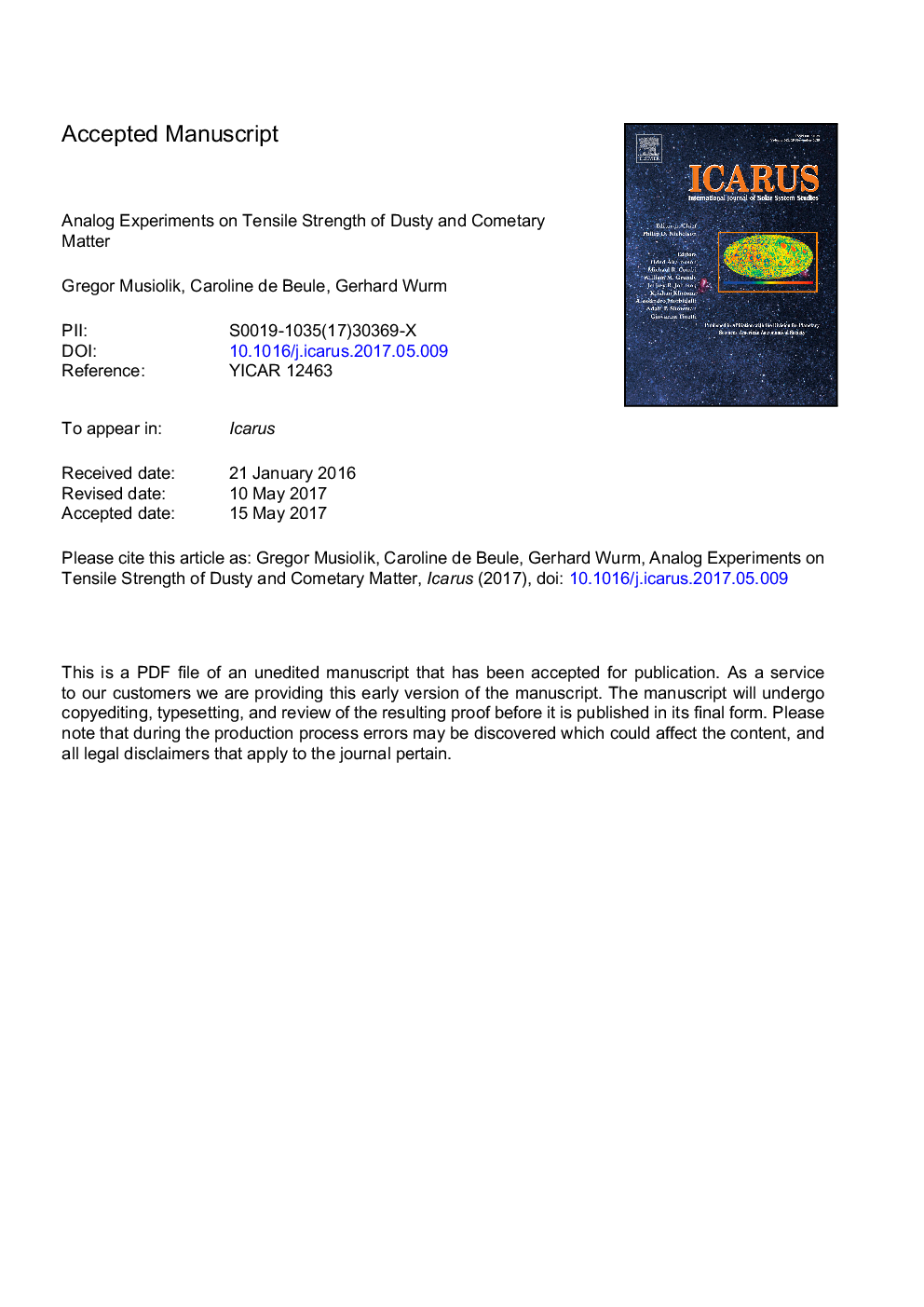| Article ID | Journal | Published Year | Pages | File Type |
|---|---|---|---|---|
| 5486973 | Icarus | 2017 | 18 Pages |
Abstract
The tensile strength of small dusty bodies in the solar system is determined by the interaction between the composing grains. In the transition regime between small and sticky dust (µm) and non cohesive large grains (mm), particles still stick to each other but are easily separated. In laboratory experiments we find that thermal creep gas flow at low ambient pressure generates an overpressure sufficient to overcome the tensile strength. For the first time it allows a direct measurement of the tensile strength of individual, very small (sub)-mm aggregates which consist of only tens of grains in the (sub)-mm size range. We traced the disintegration of aggregates by optical imaging in ground based as well as microgravity experiments and present first results for basalt, palagonite and vitreous carbon samples with up to a few hundred Pa. These measurements show that low tensile strength can be the result of building loose aggregates with compact (sub)-mm units. This is in favour of a combined cometary formation scenario by aggregation to compact aggreates and gravitational instability of these units.
Related Topics
Physical Sciences and Engineering
Earth and Planetary Sciences
Space and Planetary Science
Authors
Grzegorz Musiolik, Caroline de Beule, Gerhard Wurm,
